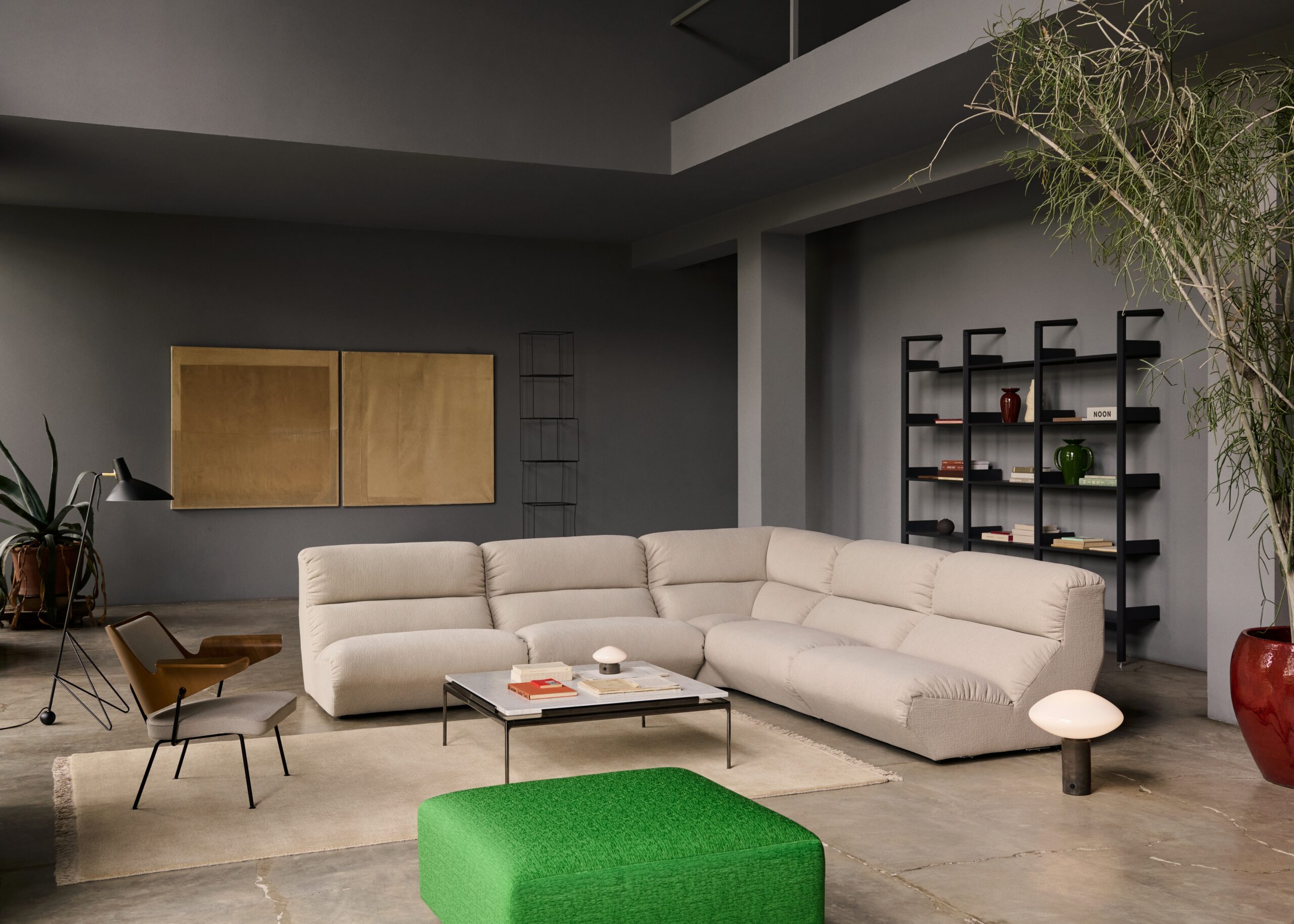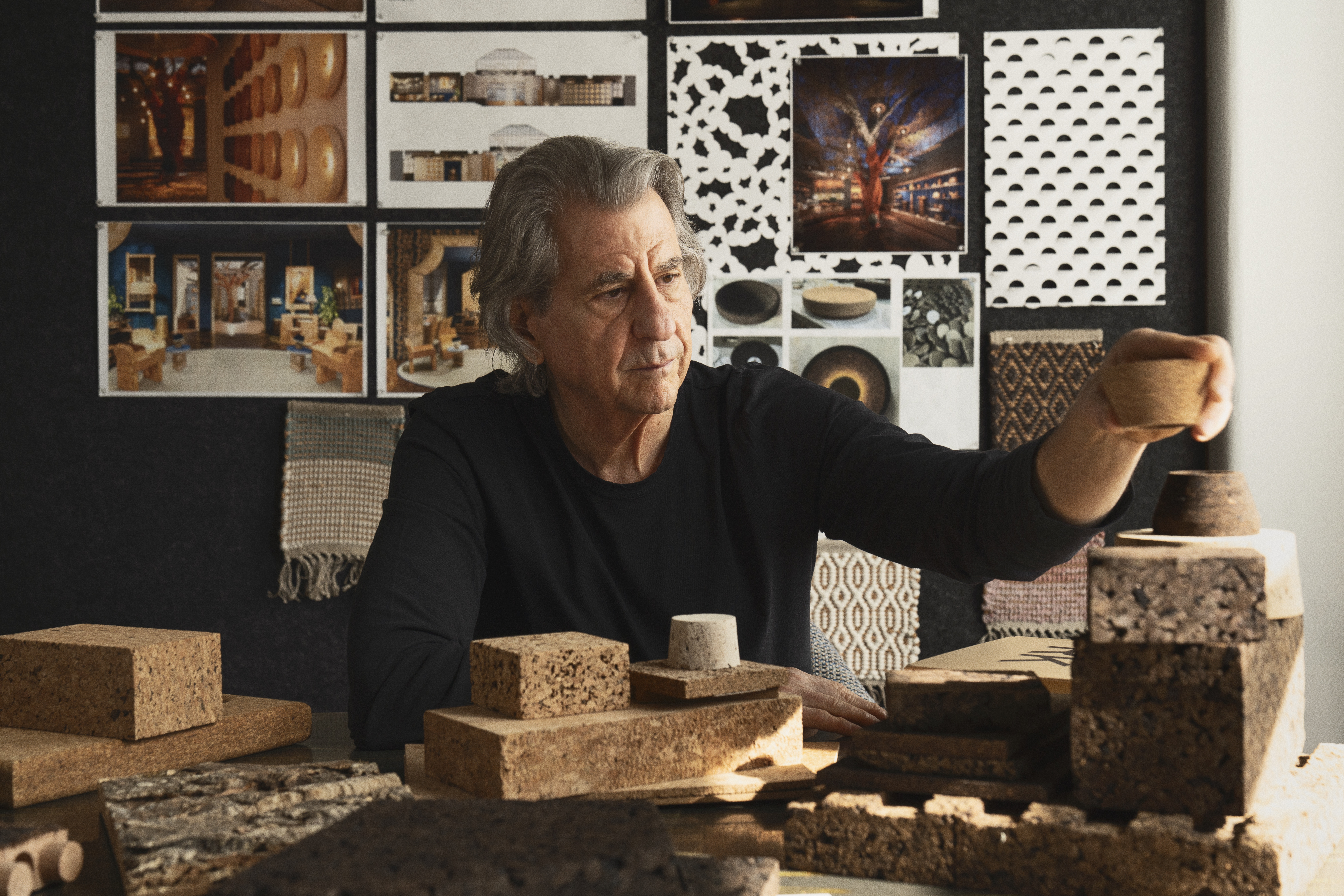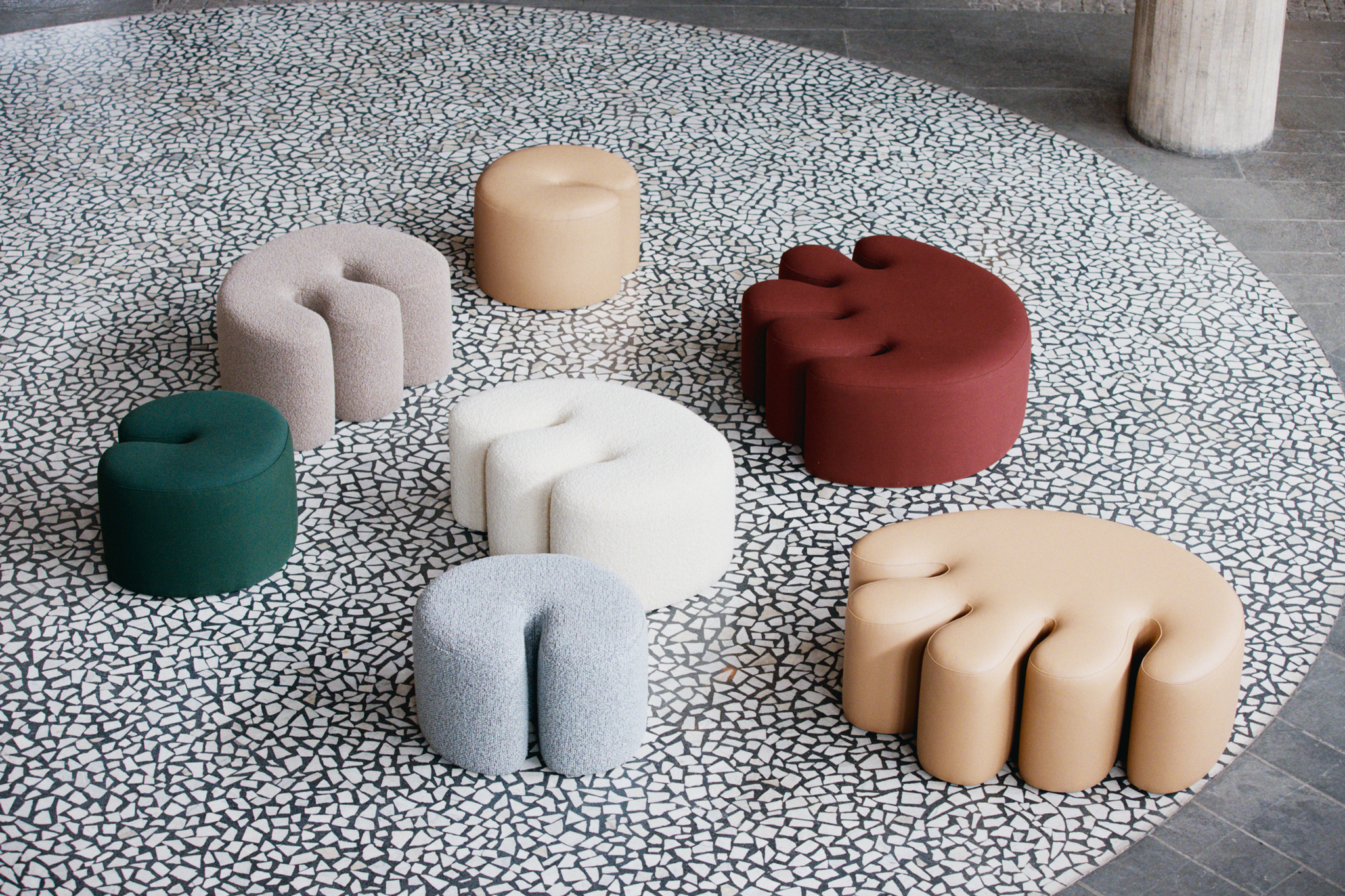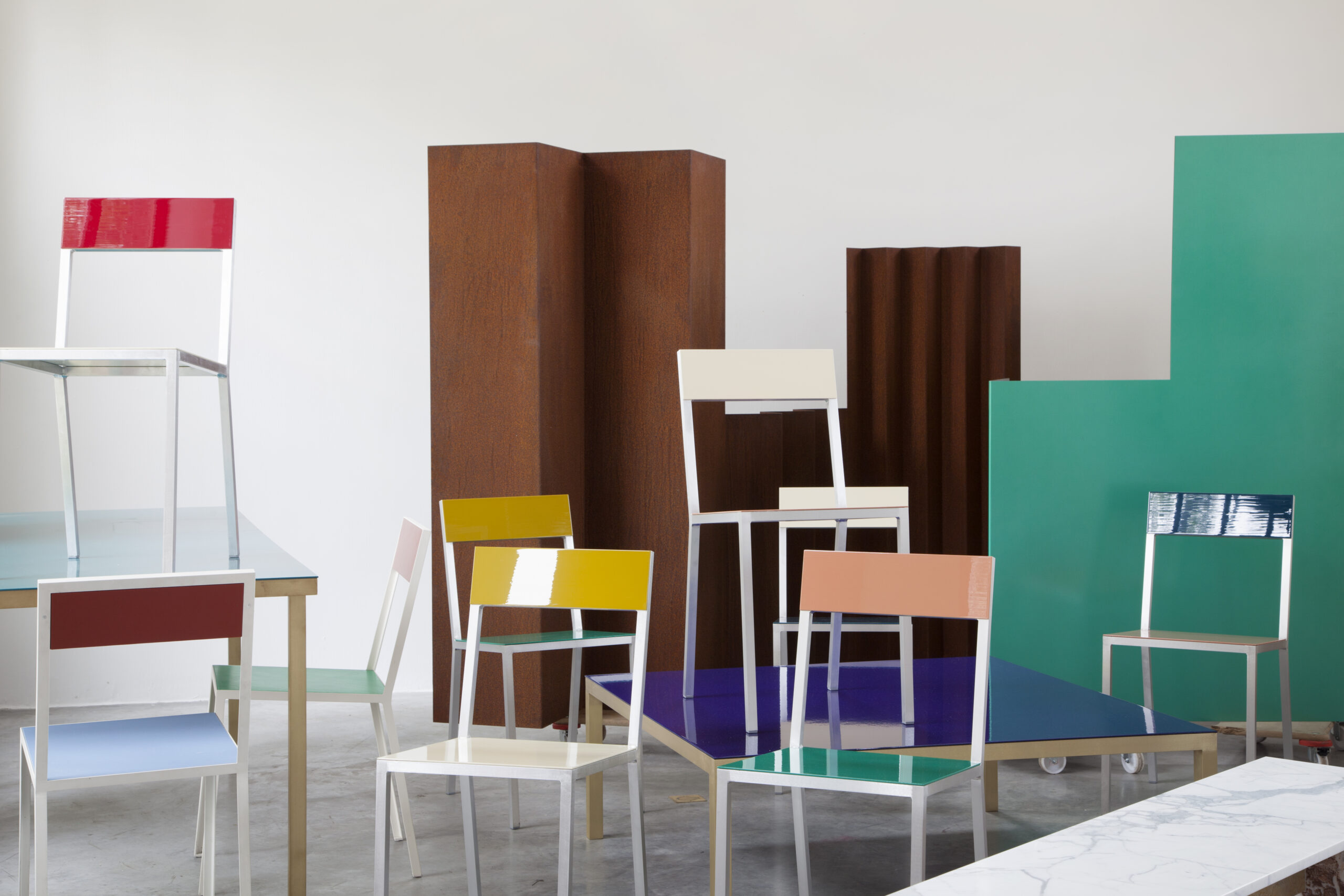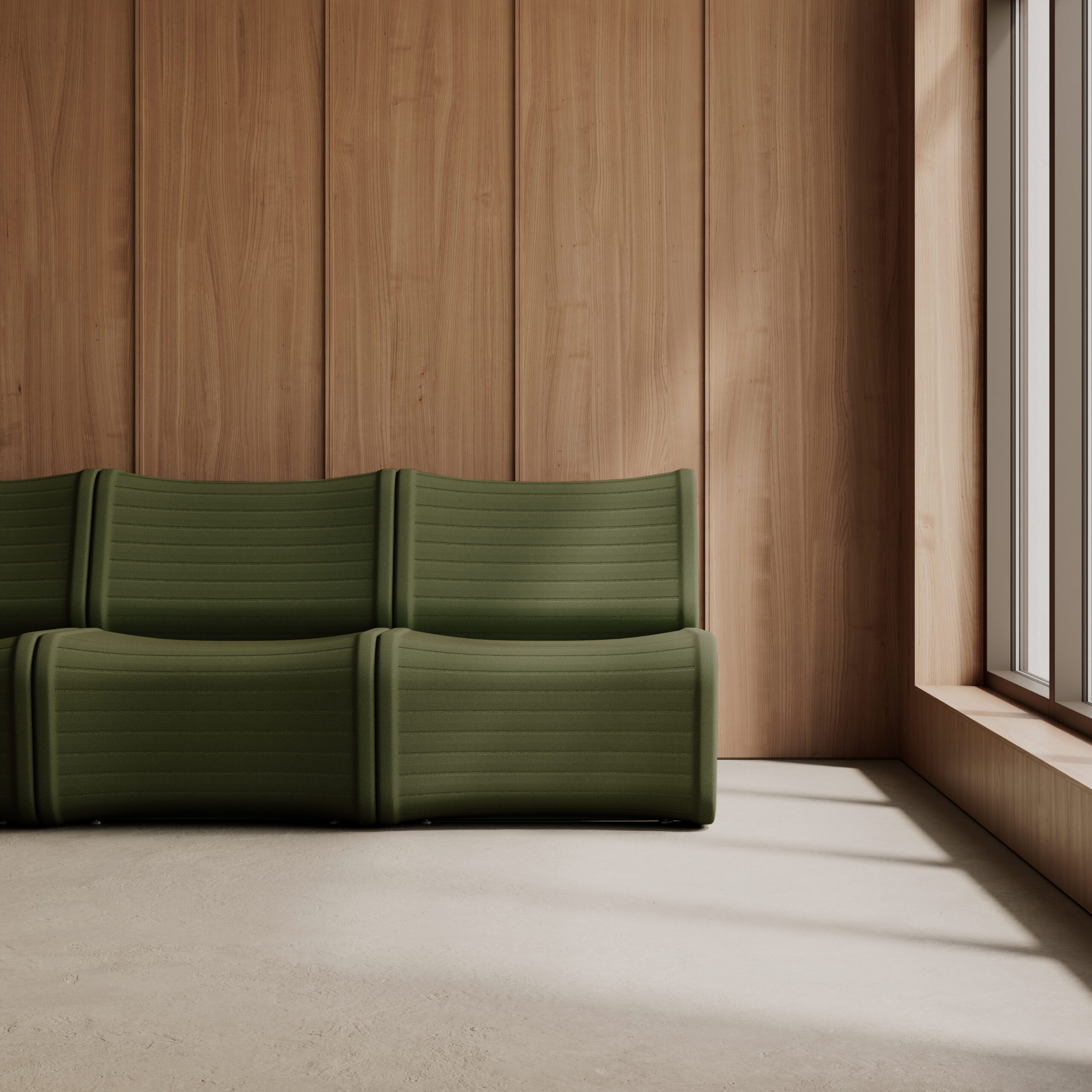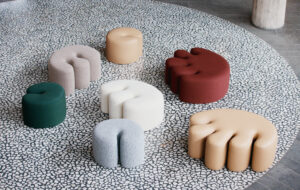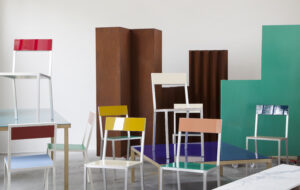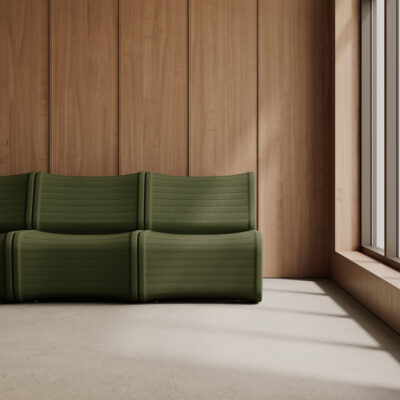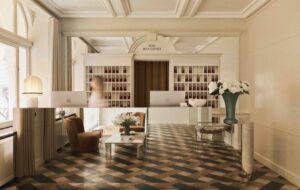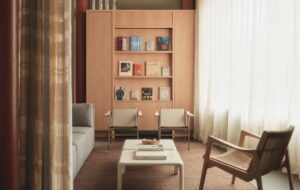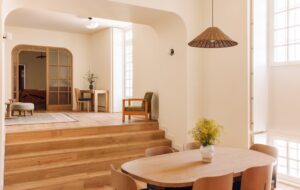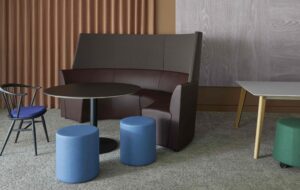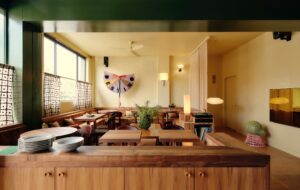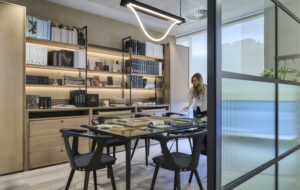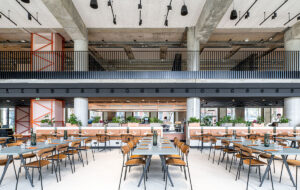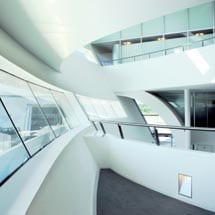 farbourgh airport
farbourgh airport
 By Michael Willoughby
By Michael Willoughby
Work at an airport? You must be joking!
FARNBOROUGH AIRPORT TERMINAL
ARCHITECT: REID ARCHITECTURE
CLIENT: TAG AVIATION
COST: £10M
START DATE: SEPTEMBER 2004
COMPLETION: JANUARY 2006
TOTAL FLOOR SPACE: 4,570SQ M
Either you’re one of those poor kids who work in Boots and has to commute to the suburbs for the privilege or you are somehow responsible for managing queues, creating security paranoia or navigating stag dos in transit.
Well, usually. But at Farnborough, airport to the rich, famous and the very, very busy, things are a bit different.
For a start, you get to service a different type of clientele from your usual Easyjet cargo; chartering a flight to the
US from here will cost you about £70,000.
London-based practice REID Architecture won the competition to building Farnborough Airport in 2000. The
firm was commissioned by TAG Aviation, a Geneva-based company specialising in private air travel. The contract was to construct three elements – a control tower, three hangars and the terminal – on a site leased from the Ministry of Defence.
The first thing you notice about Farnborough Airport is the atmosphere. During my hour-long visit I find only one traveller sitting in the airport, wearing loafers, a cotton jacket and sporting a bit of a paunch. Unlike the airport, he looks quite ordinary really. He could be working in the conference suite but is sitting on a leather sofa in the soaring white space reading the complimentary paper and drinking a complimentary coffee.
A pilot enters the building and the man gets up from the sofa (leaving his bag, which is neither removed nor destroyed) and they shake hands. His phone rings – he flips it open and talks into it, mid conversation with the pilot, without a hint of apology. “Da,” he says, “da.” This building is so sublime, so calming, that I actually feel kindly towards the Russian, who could probably have me killed if he felt the need. Spiky emotions dissolve in a minute against the fascinating Guggenheim-like curves of the interior balcony. Its shape is designed after the vortex of air that forms over the wing when a plane encounters turbulence. The balcony extends from the drop-off entrance, which is shaped like the part of a jet engine where the air is sucked in. The building itself resembles a huge pair of wings. It’s like something Claude-Nicholas Ledoux might have designed.
In an upstairs room, a group of men are employed to keep track of the private flights of the captains of industry, their flight codes being written on – and frequently erased from – a wall-mounted white board as deals are set up and collapse. They still haven’t found software agile enough to cope with all these reschedulings in real time.
But, unlike a lot of products and services catering to the super rich, which drown in fin-de-siècle luxury, fragrance and gilt, there is nothing bling about Farnborough Airport and that must be a breath of fresh air for a certain type of person.
Marketing director Siobhan Gerrard confirms the feeling of tranquility: “I’ve never seen any kind of agro here,” she says. “Because we cater to their every whim.”
REID was also in charge of landscaping the site. Design director Matthew Bedward calls the three parts of the airport (control tower, hangars and terminal) “sculptural”, and though that term is overused, each building does have a clear sense of shape, most easily described using your hands. The three elements are linked by use of a common external material: milled-aluminium tiles. These partially reflect and partially absorb the light. They also last longer than painted aluminium and “Though they age, it’s gracefully,” says Bedward.
Is this a reference to some of the many celebrities who pass through the airport? What have REID done in order to maintain their levels of privacy? “The buildings were designed to be practical,” says Bedward. “TAG took care of the celebrities’ needs. There are very experienced.”
In fact, if there are any prima donnas here at Farnborough, it’s the private jets. “It’s a theatre of aviation with the aircraft as the stars,” he continues. Perhaps a fashion show would have been a better metaphor, since the stage is, in fact, a runway.
Ogling is at the heart of this airport’s design. It was legally required by the Civil Aviation Authority to provide a 360° view from the control tower, and this involved the shortening of the copse of trees in which it nestles. But by retaining this feature, even in a modified form, REID left some interest in the stark horizontal landscape.
The working space of the terminal is similarly organised
to allow people to see what they need to so they can provide the best possible service to their luxury travellers. For example,
the reception desk escorts (meeters and greeters) can see the car park, the runway and the hangars; they can monitor the arrival of passengers, they will know whether a plane has landed, or can check whether it’s taxiing out onto the runway.
“We were very careful to consider the horizontal location of the reception area,” Bedward says. This is on a half-landing, 1.5m off the ground, and sits between the drop-off entrance and the formal entrance to the west. So not only can employees easily track human and aviational traffic, they can also access it from both sides without descending or ascending stairs. This way security and customs filtration is made part of a processional route.
The escorts are also closer to the administrative and operations part of the building on the first floor. From here the operations director takes over control of the planes from air traffic control as soon as they leave the runway. He too can see the runway, hangars and tower so his team can direct the planes to park, find out if they need ground power, cleaning, catering or to secure transport or hotels for the crew.
As you continue north-east through the wing of the building, you find the people who have less need to see the runway, including the CEO and the administrative area.
The team involved in chartering business flights internationally work on the other side of the building.
To the far east and west of the building are the staff balconies. Mostly used for smoking, they are shielded from the noise of the aircraft by a projection of the walls, and although some of the employees are grateful to be kept out of the wind, others are sad to miss the view of the airfield.
But it is the view from inside the building that must be a constant delight to those who work here. Long, thin picture windows, tilted 45° by the upward curve of the ascending wall, create a panorama of the airfield. Like much about the building it’s a simple design, but a complex effect.
Indeed, the terminal shape is simple. Walls and roof blend to form a tube. Ceilings that are 2.7m high were only fitted to placate tenants sub-leasing space from TAG Aviation. “They can be removed,” purist Bedward adds hopefully.
But it’s not just TAG employees and tenants who make use of the building. Gold Air pilot Ben Grange, whizzing through on his Learjet 45, called the usability of the building “fantastic”, although he thinks showers would have been nice. He also points out the curious fact that there are no urinals.
The terminal also had to include private meeting spaces for visiting CEOs and their retinues. German office-furniture-provider K+N International designed the cool, white, glazed partitioning.
“Time is money,” says Gerrard, “and it’s often cheaper for
a business leader to fly in and meet in the building than travel out to a regional office.” To that end, Farnborough is equipped with full conference facilities. Partitions can be moved to provide peace and quiet to individual passengers if a large group (20 or more) is scheduled to arrive.
In fact, the interior of Farnborough terminal is absolutely nothing like an airport whatsoever. It’s quiet and white and clean – more like a luxury hotel and a dream to work in.
REID’s building is particularly impressive because it resisted the Agatha Christie vision of the golden age of aviation, and went with a design that confidently, beautifully and simply looked to the future. As a result, it’s completely different from the airports that most have to work in and 99
per cent of the rest of us fly from. And what a shame that is.

